1. Pointing: they want something!
 image source: reddit.com
image source: reddit.com
When babies point at objects, they are often displaying a burgeoning sense of curiosity and a desire to explore their surroundings. Pointing can serve as a form of communication, indicating what they want or what has caught their interest. It's a pivotal developmental milestone as it showcases their ability to draw attention to specific objects.
2. Waving: are they saying hello or just imitating you?

image source: reddit.com
The act of waving is more than just a physical motion; it's a social gesture that babies learn by observing the behaviors of those around them, particularly adults. When babies wave, they are often mimicking the actions they see during greetings or farewells. This simple yet significant gesture signifies their understanding of social interactions and their attempts to engage with others.
3. Clapping: they're joyful!
 image source: adventurebabies.com
image source: adventurebabies.com
Clapping is a joyful expression that babies learn to associate with positive experiences. From the moment they discover their hands, babies are fascinated by their ability to produce sound and movement. As they develop coordination and motor skills, clapping becomes a natural way for them to express excitement and happiness.
4. Opening and closing their fists: this could mean a few different things...
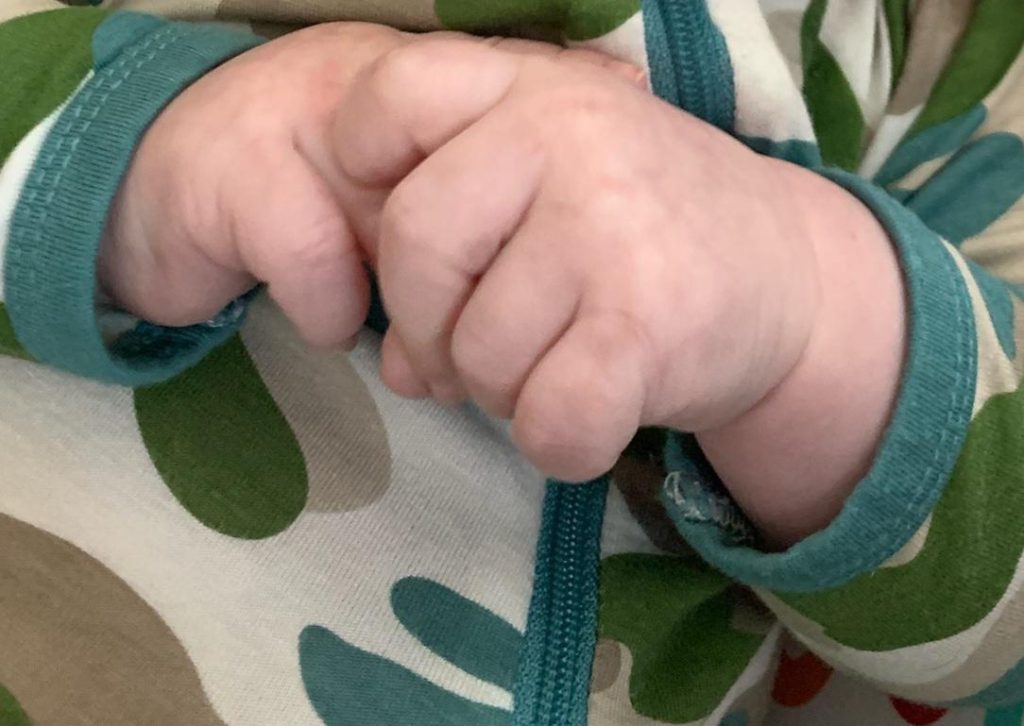 image source: reddit.com
image source: reddit.com
The action of opening and closing fists is a nuanced gesture that can convey a range of emotions and intentions in babies. At times, it might signify frustration, as they attempt to grasp or manipulate objects within their reach. Other times, it could denote excitement, as they anticipate engaging with something new or stimulating.
5. Shaking their head: they disapprove
 image source: reddit.com
image source: reddit.com
The gesture of shaking the head is a subtle yet meaningful form of communication for babies, even in the earliest stages of development. While its significance may become more pronounced as they grow older, even very young infants can exhibit this motion to express disapproval or disagreement.
6. Holding arms up: pick me up please!
 image source: reddit.com
image source: reddit.com
When babies hold their arms up, it's often a clear indication of their desire for physical closeness and comfort. Whether they're feeling tired, overwhelmed, or simply seeking reassurance, this gesture communicates their need for affection and security. By reaching out to be picked up or held, babies are expressing their trust and reliance on their caregivers.
7. They're rubbing their eyes or face: sleepy time
 image source: reddit.com
image source: reddit.com
When babies rub their eyes or face, it's often a telltale sign that they're feeling tired or sleepy. After a day filled with exploration, play, and learning, babies can become overwhelmed and fatigued. Rubbing their eyes or face is a natural response to the onset of drowsiness, as they attempt to soothe themselves and prepare for rest.
8. Patting: they want comfort or attention
 image source: reddit.com
image source: reddit.com
When babies engage in patting behavior, it's often a multifaceted expression of their emotional needs and desires. On one level, patting can serve as a self-soothing mechanism, providing babies with a comforting rhythm that helps regulate their emotions and alleviate stress. Whether it's patting their chest, stomach, or a nearby object, this repetitive motion offers babies a sense of control.
9. Pulling on their ears or hair: they're uncomfortable
 image source: reddit.com
image source: reddit.com
When babies pull at their ears or hair, it's often a signal that they're experiencing discomfort or pain, particularly in the case of teething. The sensation of teething can be both physically and emotionally distressing for babies, as they navigate the discomfort of emerging teeth and the associated changes in their gums.
10. Reaching: they're interested in something
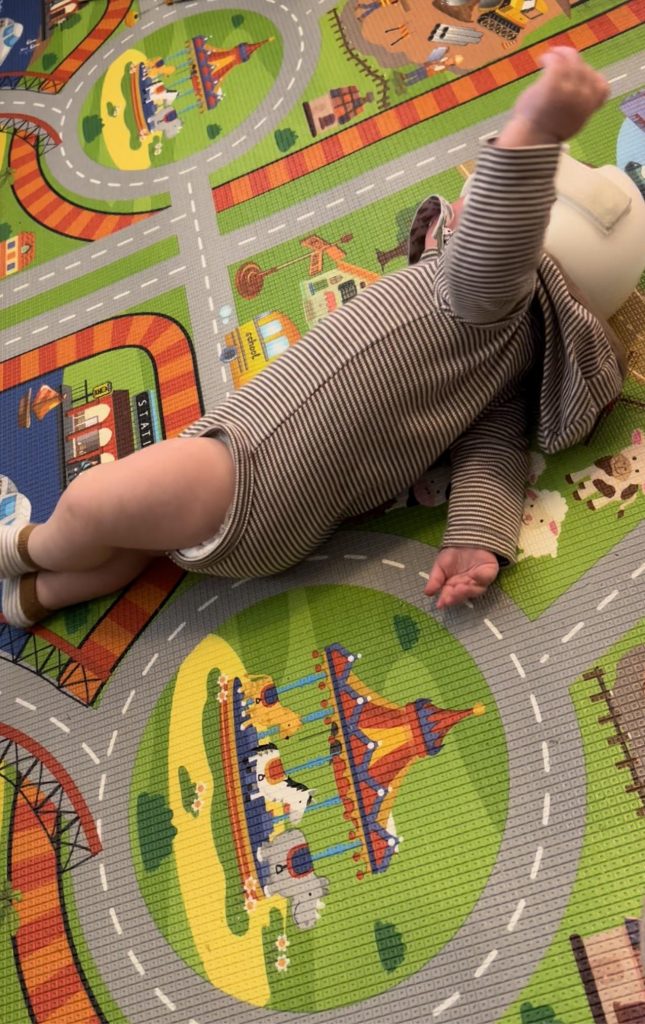 image source: reddit.com
image source: reddit.com
The act of reaching is a fundamental form of communication for babies, allowing them to express their desires and interests in the world around them. Whether it's reaching for a favorite toy, a colorful object, or the comforting embrace of a caregiver, this gesture signifies their curiosity and engagement with their environment.
11. Scratching: something is irritating them
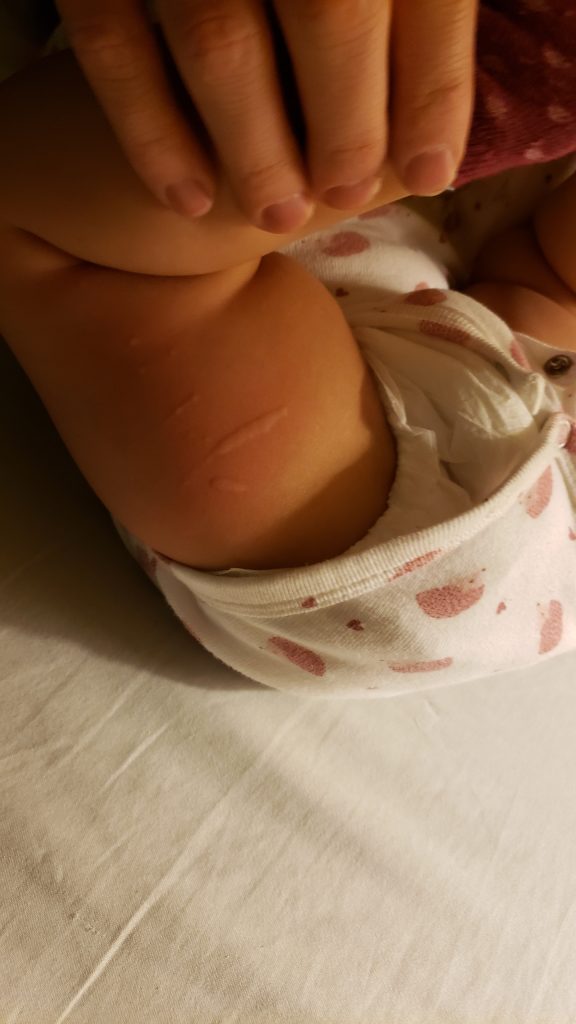
image source: reddit.com
When babies scratch at a particular body part, it's often a response to discomfort, such as itching or irritation. Whether it's a rash, insect bite, or dry skin, babies may scratch as a reflexive attempt to alleviate the sensation of discomfort they're experiencing. While scratching can provide temporary relief, it can also exacerbate underlying skin conditions or lead to further irritation.
12. Covering their face: they're shy!
 image source: reddit.com
image source: reddit.com
When babies cover their eyes or face, it can signify a range of emotions and intentions, from shyness to tiredness to a desire to hide from something. In social situations, covering their eyes or face may indicate a sense of shyness or apprehension, as babies navigate unfamiliar environments and interactions with others.
13. Thumb sucking: it's a completely normal comfort routine
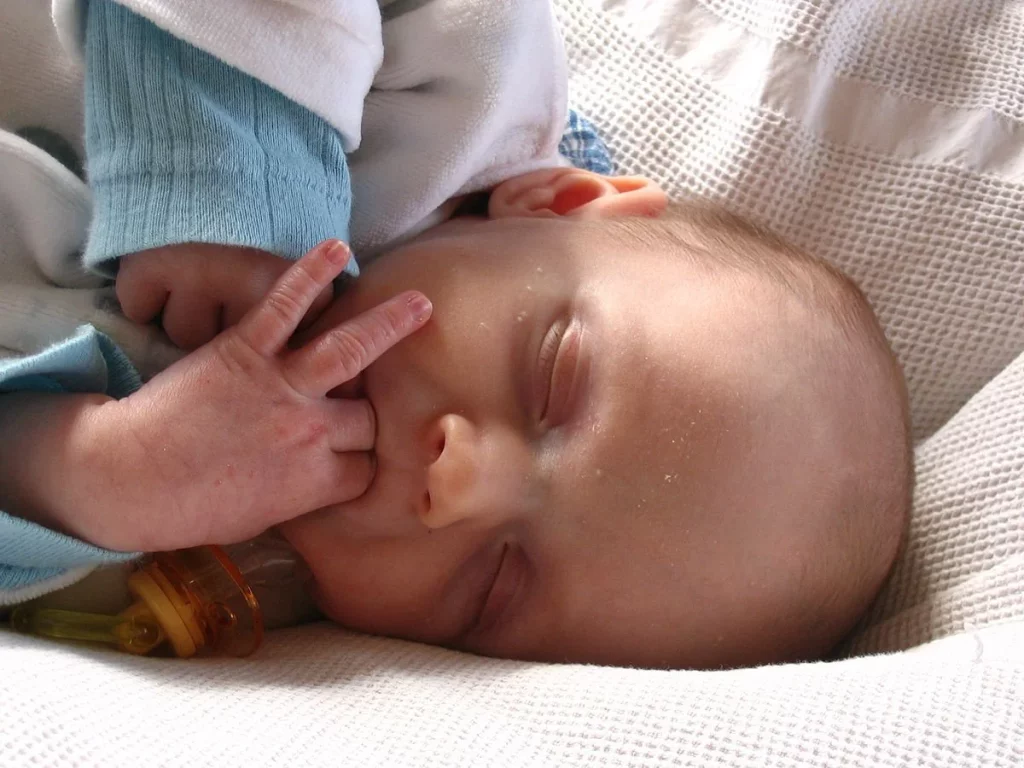 image source: reddit.com
image source: reddit.com
Thumb sucking is a common self-soothing behavior observed in many babies. It provides them with a sense of comfort and security, often serving as a source of reassurance during times of stress or anxiety. For babies, sucking on their thumb can evoke feelings of warmth and familiarity reminiscent of their time in the womb, where sucking on fingers was a natural reflex.
14. Hand flapping: they want you to know they're happy!
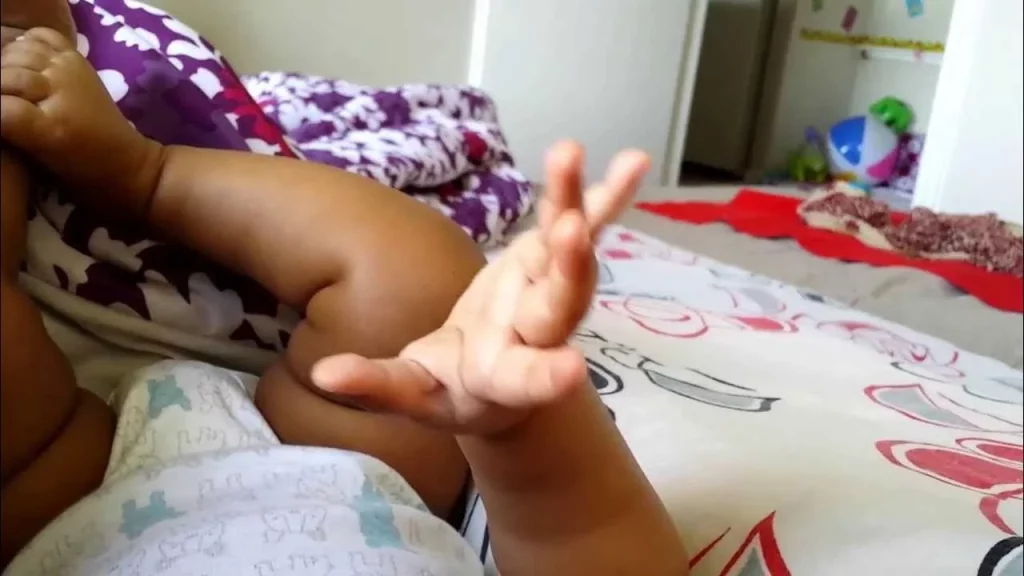 image source: reddit.com
image source: reddit.com
Hand flapping can also serve as a form of self-regulation, helping babies release excess energy or sensory overload. While it's a natural and typically benign behavior in infancy, caregivers should be attentive to the context in which hand flapping occurs and ensure that it doesn't interfere with their baby's ability to engage in social interactions or other developmental activities.
15. Tapping or drumming their fingers: you have an impatient baby
 image source: reddit.com
image source: reddit.com
Babies might tap or drum their fingers as a way to explore the auditory and tactile sensations produced by the movement. It's a form of sensory exploration that allows babies to engage with their environment and discover cause-and-effect relationships. Tapping or drumming fingers can also be a sign of impatience or frustration.
16. Hand waving near their mouth: they're hungry!
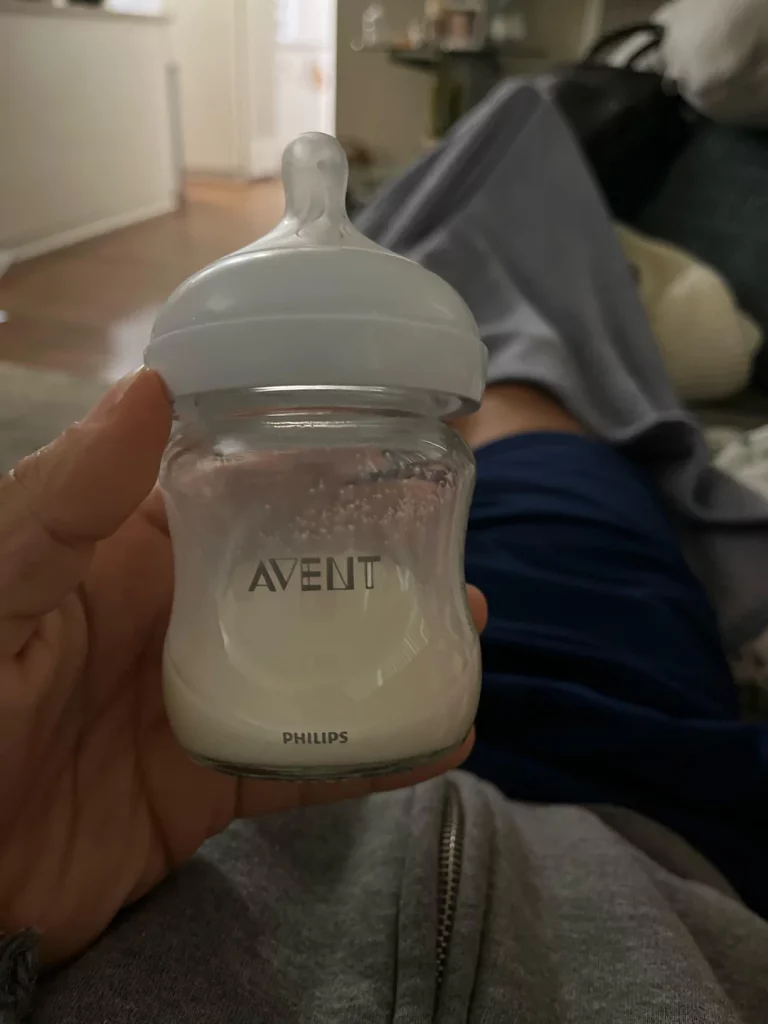 image source: reddit.com
image source: reddit.com
This gesture serves as a nonverbal cue for caregivers, signaling their baby's physiological need for nourishment. By waving their hands near their mouth, babies instinctively draw attention to their hunger cues, alerting caregivers to their need for feeding. Additionally, hand waving near the mouth can also be a precursor to self-feeding.
17. Throwing objects: they don't mean it in a bad way!
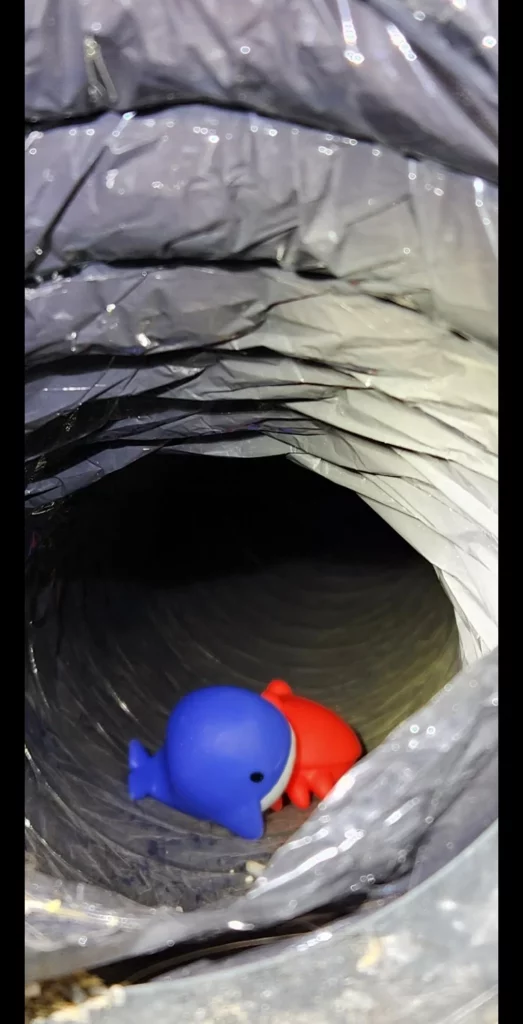
image source: reddit.com
Although it might not always be intentional, throwing objects is a natural and exploratory behavior observed in many babies. It reflects their innate curiosity and desire to understand the physical properties of objects in their environment. By throwing objects, babies engage in a form of experimentation, testing the effects of force and gravity on different materials.
18. Covering ears: they don't like the noise
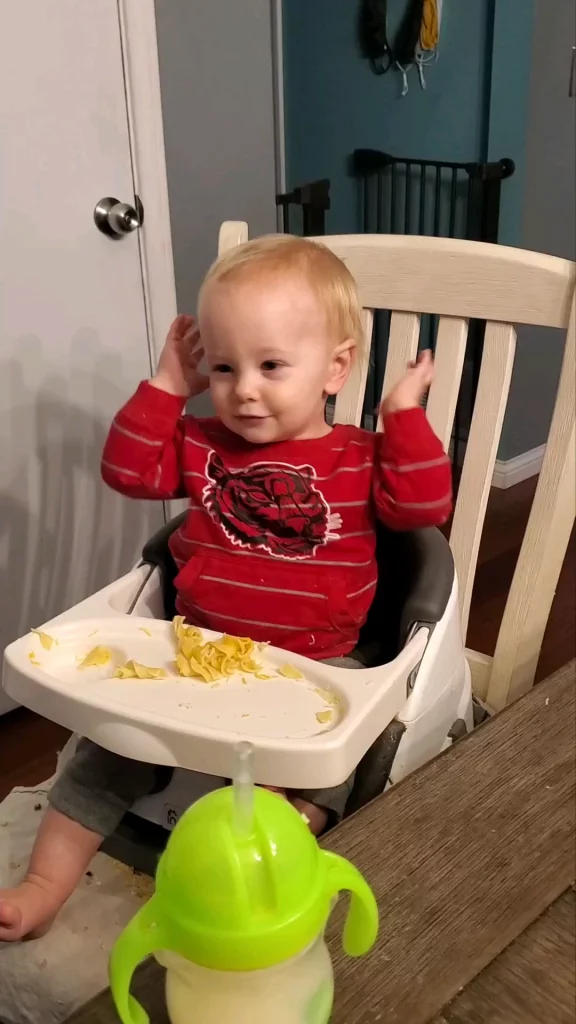
image source: reddit.com
When babies cover their ears, it's often a response to discomfort from loud noises or a desire to block out sound. Their delicate auditory system is highly sensitive to loud or sudden noises, which can be overwhelming or distressing for them. By covering their ears, babies attempt to reduce the intensity of sound and create a sense of calm.
19. Patting or touching their stomach: is it hunger or discomfort?
 image source: reddit.com
image source: reddit.com
When babies pat or touch their stomach, it's a versatile gesture that can convey various needs and emotions. It could indicate hunger, as babies become aware of sensations in their stomach signaling a need for nourishment. Alternatively, patting the stomach might also suggest discomfort, such as digestive issues or bloating.
20. Clasping hands together: they're content
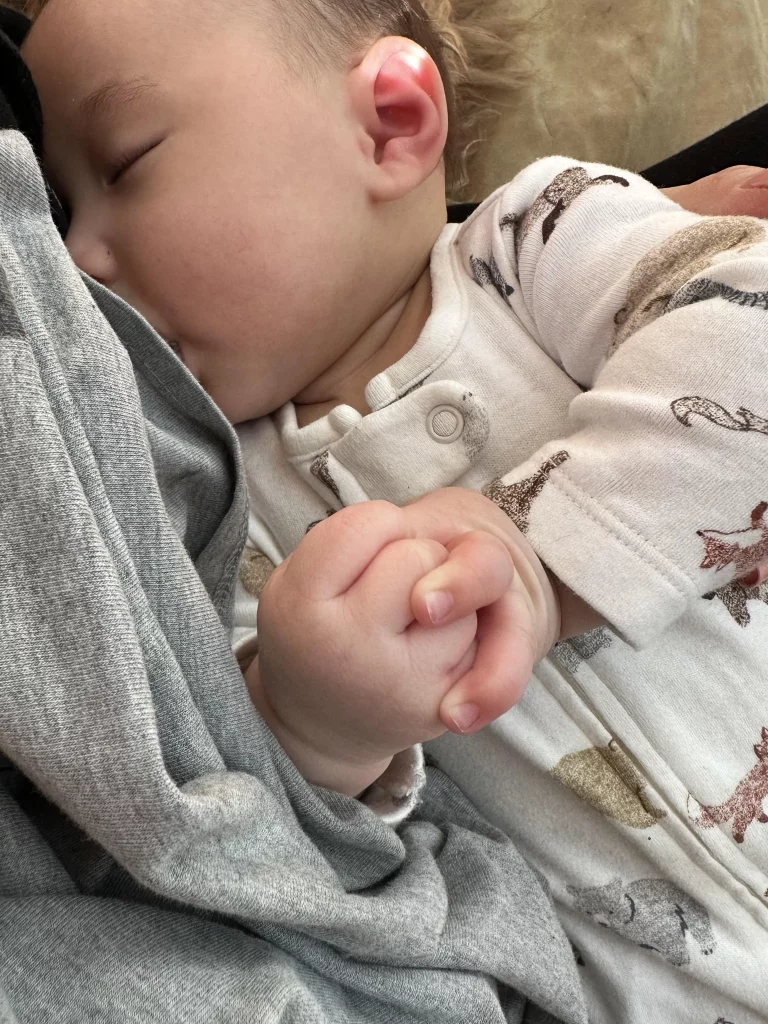 image source: reddit.com
image source: reddit.com
This gesture reflects their sense of security and happiness in their environment, as they express their emotional state through physical movements. Whether it's in response to a familiar face, a comforting touch, or a moment of playfulness, clasping hands together symbolizes their inner sense of peace and fulfillment.
21. Pointing with the whole hand instead of finger: they're VERY interested in something
 image source: bbc.co.uk
image source: bbc.co.uk
Pointing with the whole hand is a more pronounced gesture that indicates a heightened level of interest or desire in babies. Whether it's a colorful toy, an intriguing sound, or a beloved caregiver, pointing with the whole hand serves as a clear indication of their preferences and intentions. This gesture also demonstrates their growing cognitive abilities.
22. Grabbing or pulling clothing: they want attention
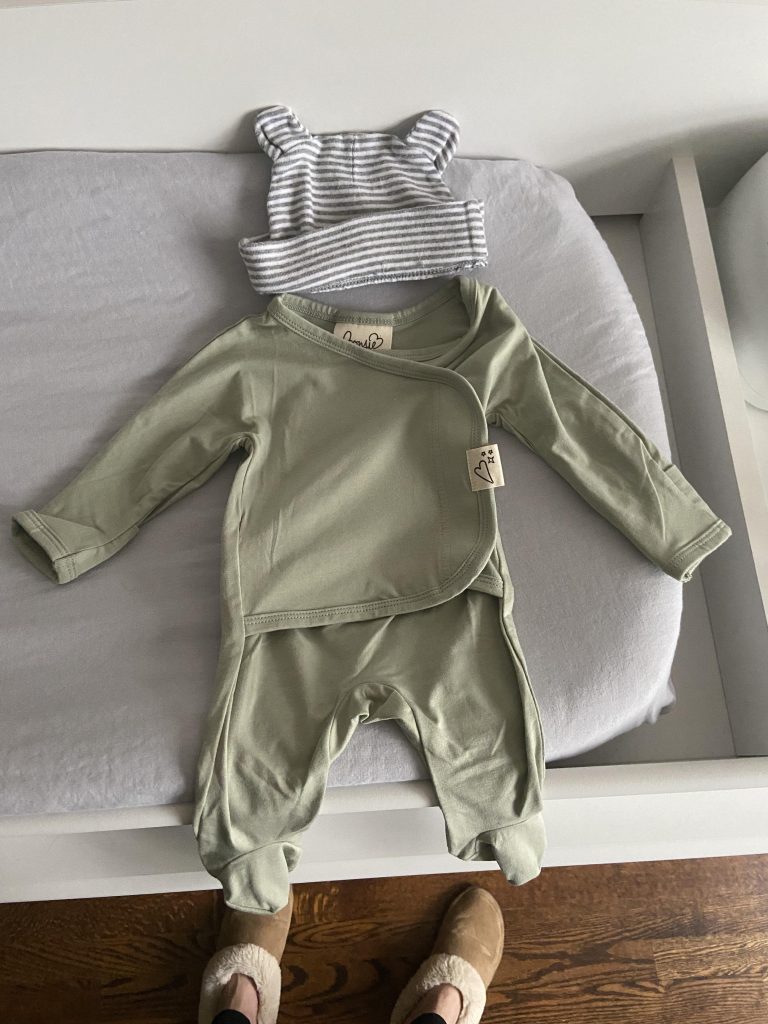 image source: reddit.com
image source: reddit.com
This behavior reflects their innate curiosity and desire to understand the physical properties of objects in their environment. Whether it's the softness of fabric or the stretchiness of a garment, grabbing or pulling clothing offers babies a sensory experience that stimulates their cognitive and motor development.
23. Making a fist then extending index finger: this is baby code for "more!"
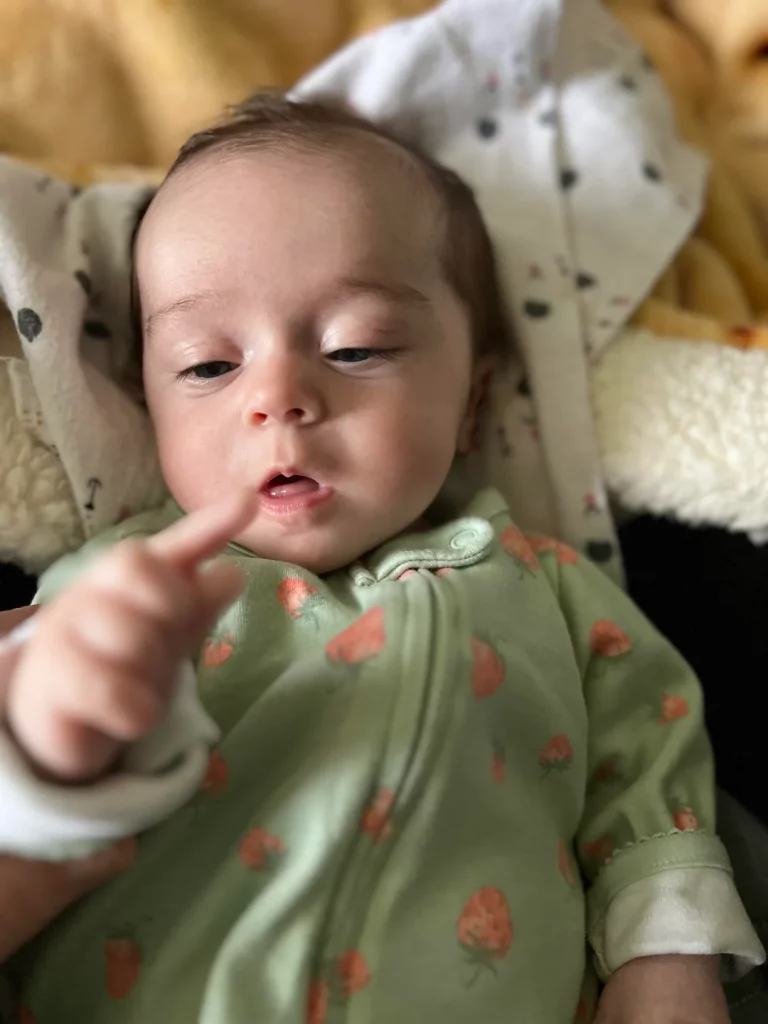 image source: reddit.com
image source: reddit.com
In some cases, babies learn simple sign language gestures like "more," which they use to communicate their desires and preferences. When babies make a fist and extend their index finger, it's a deliberate and intentional gesture that signifies their desire for additional food, activities, or experiences.
24. Pounding on objects: releasing energy

image source: littlestepsearlylearningcenter.com
Pounding or banging on objects is a dynamic and exploratory behavior observed in many babies as they engage with their surroundings. This action allows babies to experiment with cause and effect relationships, as they observe the sounds and movements produced by their actions. Whether it's tapping on a table, banging on pots and pans, or pounding on toys!
25. Touching or petting animals: because they want to!
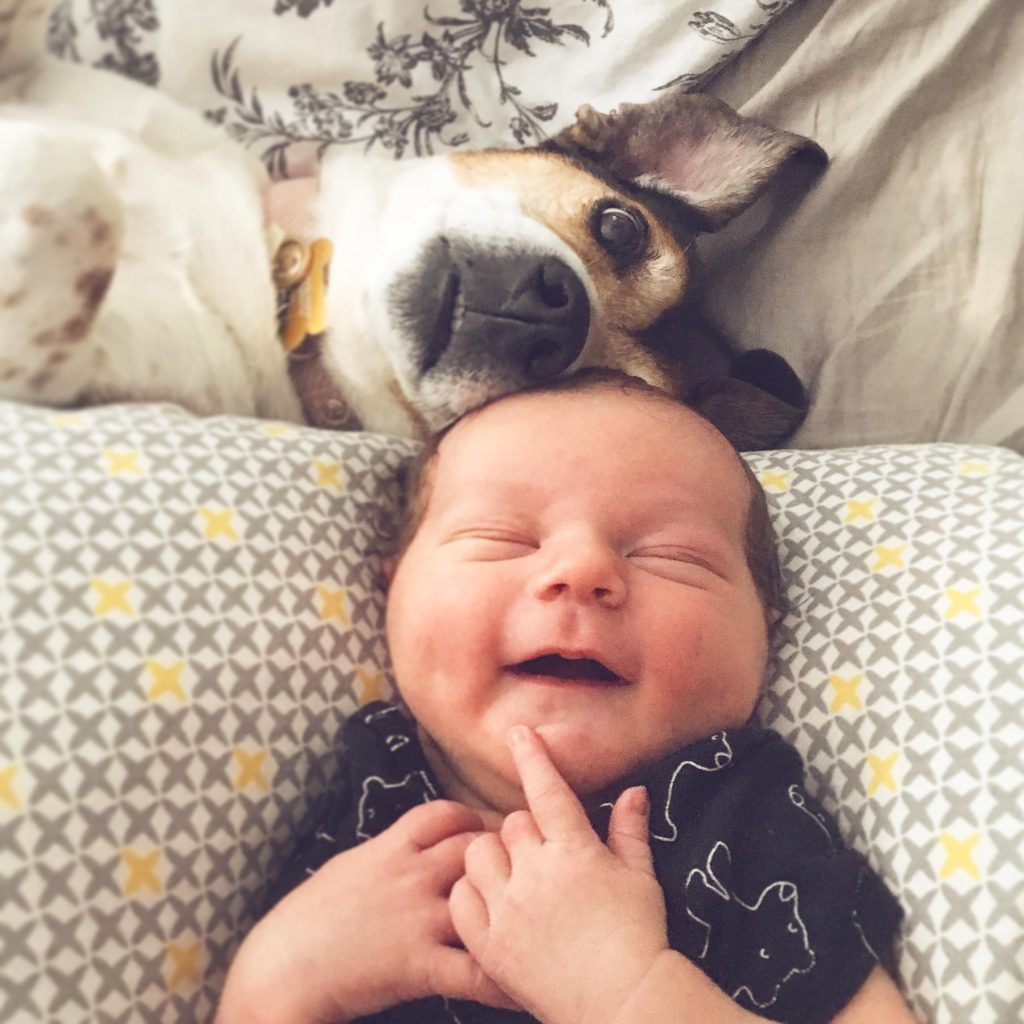 image source: reddit.com
image source: reddit.com
Whether it's a furry cat, a playful dog, or a gentle rabbit, babies are naturally drawn to the sensory experience of touching and petting animals. This tactile exploration not only stimulates their sense of touch but also fosters a sense of empathy and connection with other living beings as babies reach out to touch or pat animals.
26. Extending arms outward: this is likely for balance
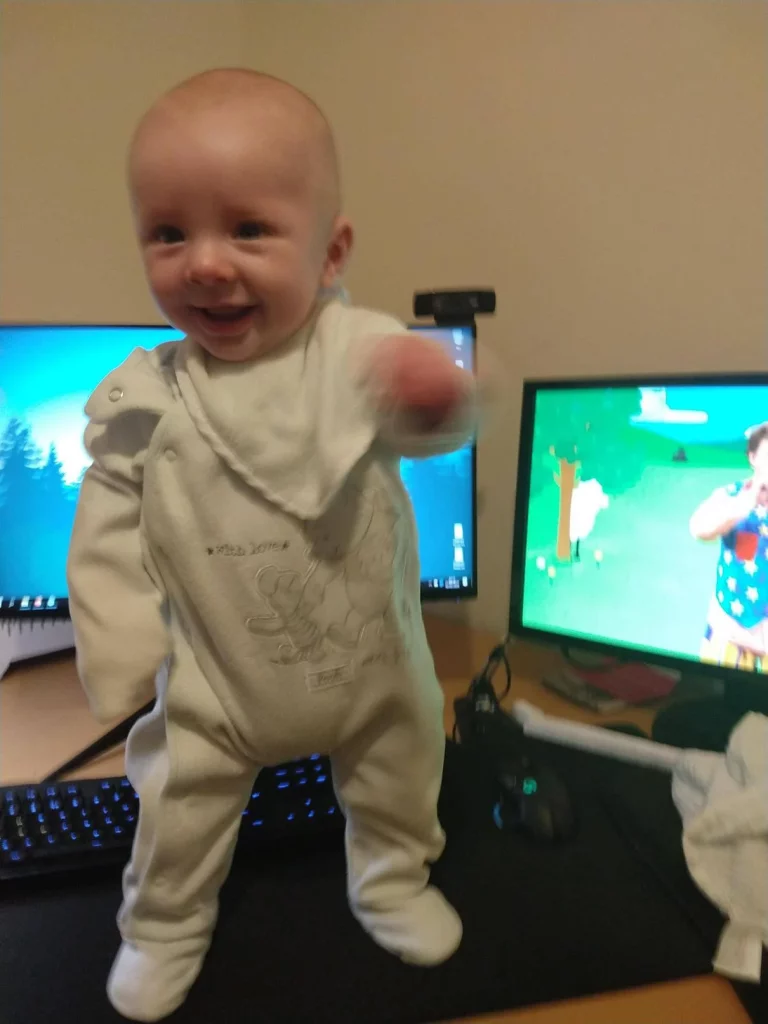 image source: reddit.com
image source: reddit.com
As babies embark on the exciting journey of standing and walking, they often rely on their arms to help them maintain balance and stability. The gesture of extending their arms outwards serves as a natural and instinctive response to the challenge of mastering these newfound skills. By spreading their arms outwards, babies create a wider base of support.
27. Making a fist with thumb tucked inside: they want security
 image source: momjunction.com
image source: momjunction.com
The thumb-in-fist reflex is a reflexive gesture commonly observed in newborns, characterized by the instinctive action of making a fist with the thumb tucked inside. This reflex reflects a baby's innate need for security and comfort, as they seek to replicate the cozy environment of the womb by curling their fingers into a tight fist and tucking their thumb inside.
28. Rubbing or patting your back: they're showing affection
 image source: reddit.com
image source: reddit.com
When babies rub or pat their caregiver's back, it's a tender and affectionate gesture. This behavior demonstrates their understanding of the reciprocal nature of caregiving relationships, as they seek to comfort and express affection towards their primary caregivers. Whether it's a gentle pat or a soothing rub!
29. Playing with fingers or toes: it's a journey of self-discovery!
 image source: reddit.com
image source: reddit.com
Whether it's wiggling their toes, grasping at their fingers, or exploring the textures of their skin, babies derive joy and amusement from the sensory experiences offered by their extremities. Playing with fingers or toes also serves as a form of self-discovery and body awareness, as babies learn about the capabilities and limitations of their own bodies.
30. Fanning their face with their hands: they're feeling overwhelmed
 image source: reddit.com
image source: reddit.com
When babies fan or wave their hands in front of their face, it's often a response to feeling overwhelmed by sensory stimuli. Strong smells, bright lights, or sudden noises can be intense for babies, causing them to seek ways to self-regulate and cope with the stimulation. This gesture serves as a protective mechanism.
31. Moving their hands in a repetitive motion: it's self-soothing

image source: reddit.com
Babies often engage in repetitive hand movements as a way to self-soothe and explore the capabilities of their hands and fingers. Additionally, repetitive hand movements allow babies to explore the range of motion of their hands and fingers, building muscle strength and coordination in the process - and it's fun to watch!
32. This is what your baby's noises really mean: cooing means they're happy!
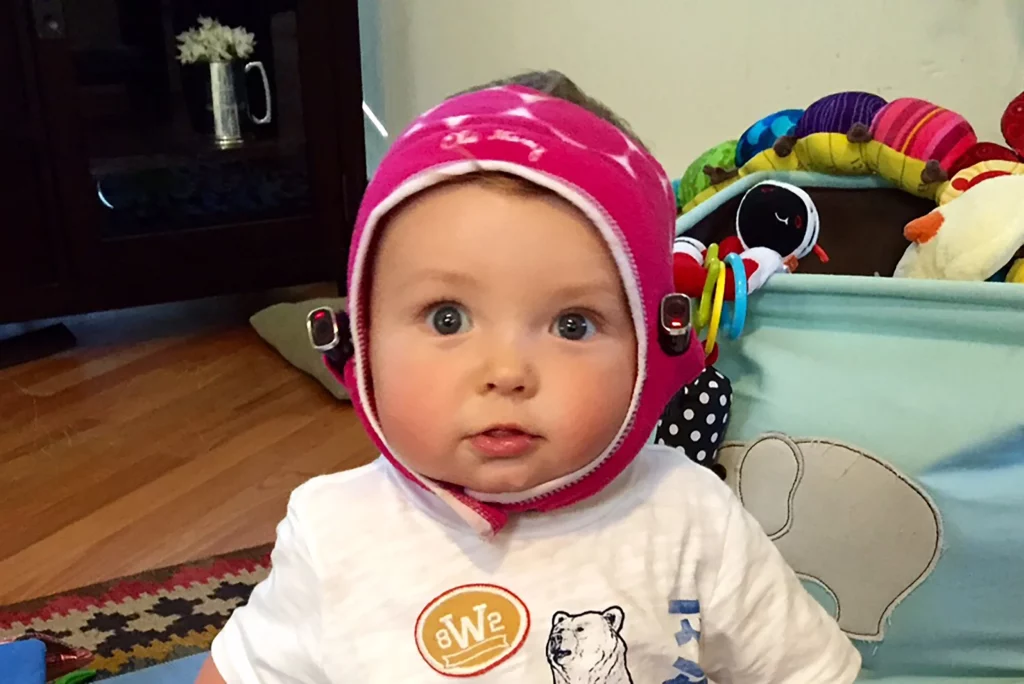 image source: reddit.com
image source: reddit.com
Cooing sounds are a delightful and heartwarming aspect of baby communication, often observed during moments of contentment and happiness. These gentle, vowel-like sounds reflect a baby's sense of satisfaction and pleasure, particularly during interactions with caregivers. Cooing serves as a form of nonverbal communication.
33. Crying communicates so many different things

image source: reddit.com
Crying is the primary mode of communication for babies, serving as a powerful signal of their needs, emotions, and experiences. Whether it's hunger, discomfort, fatigue, pain, or a need for comfort and attention, crying allows babies to express their needs and seek assistance from caregivers. This universal language of infancy serves as a lifeline for babies.
34. Babbling: it's a language development milestone
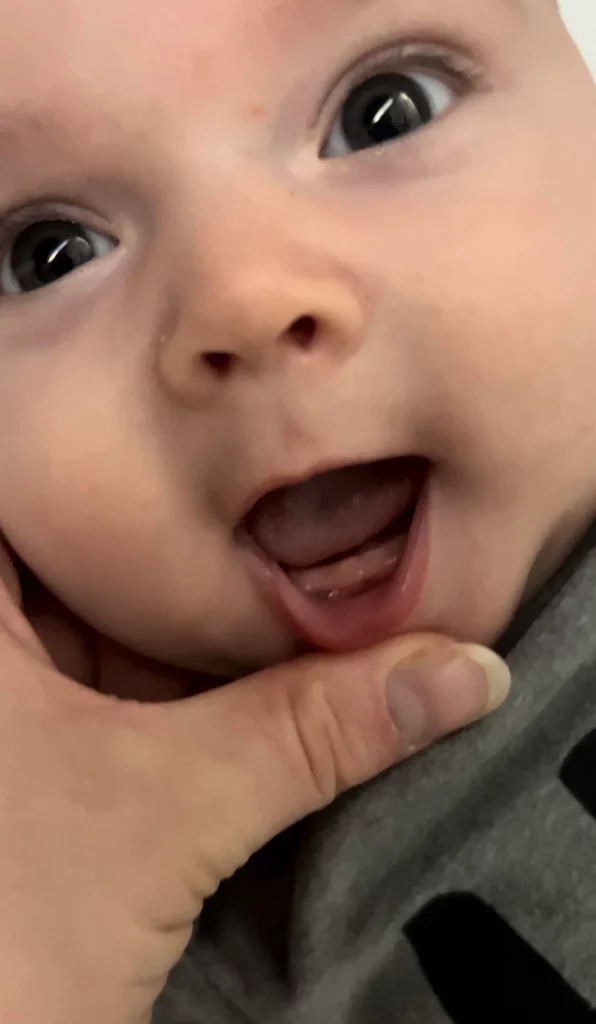
image source: reddit.com
Babbling marks a significant milestone in language development for babies, as they begin to explore the sounds and rhythms of speech. Consisting of repetitive consonant-vowel combinations such as "ba-ba" or "da-da," babbling reflects a baby's readiness to communicate and engage with their environment.
35. Gurgling: your baby is excited
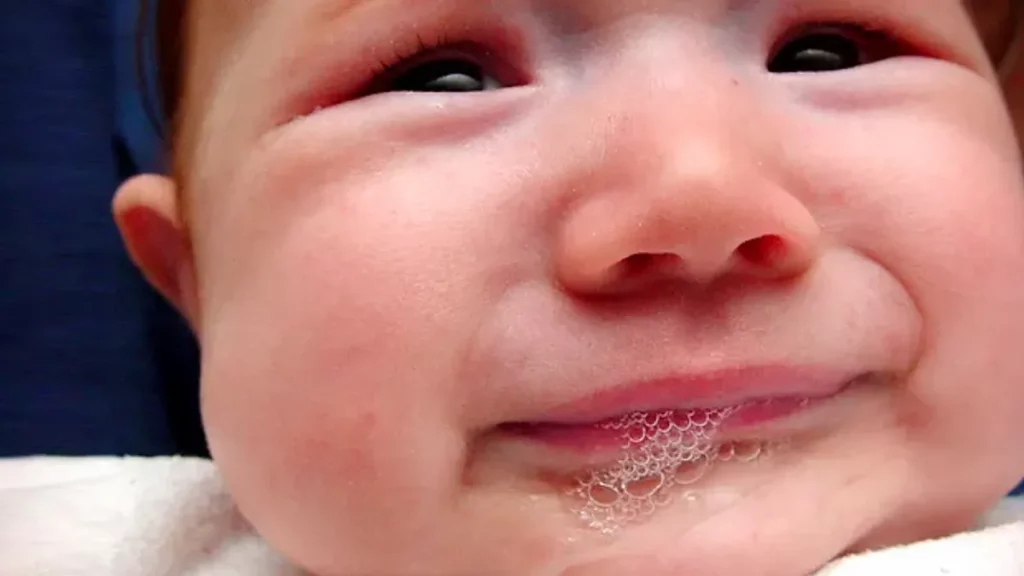 image source: reddit.com
image source: reddit.com
Gurgling sounds are a charming aspect of baby vocalization, often accompanied by movements of saliva or fluids in the baby's throat. These delightful noises can occur in various contexts, including moments of contentment, excitement, or play. When babies make gurgling noises, it's a sign of their engagement with their environment and their enjoyment of sensory experiences.
36. Grunting: they're using effort or frustrated
 image source: reddit.com
image source: reddit.com
Whether it's during bowel movements, attempts to reach for objects, or moments of discomfort or frustration, grunting serves as a means of expressing their physical and emotional experiences. This guttural sound can range from soft murmurs to more pronounced vocalizations.
37. Sighing: they're relaxed and content!
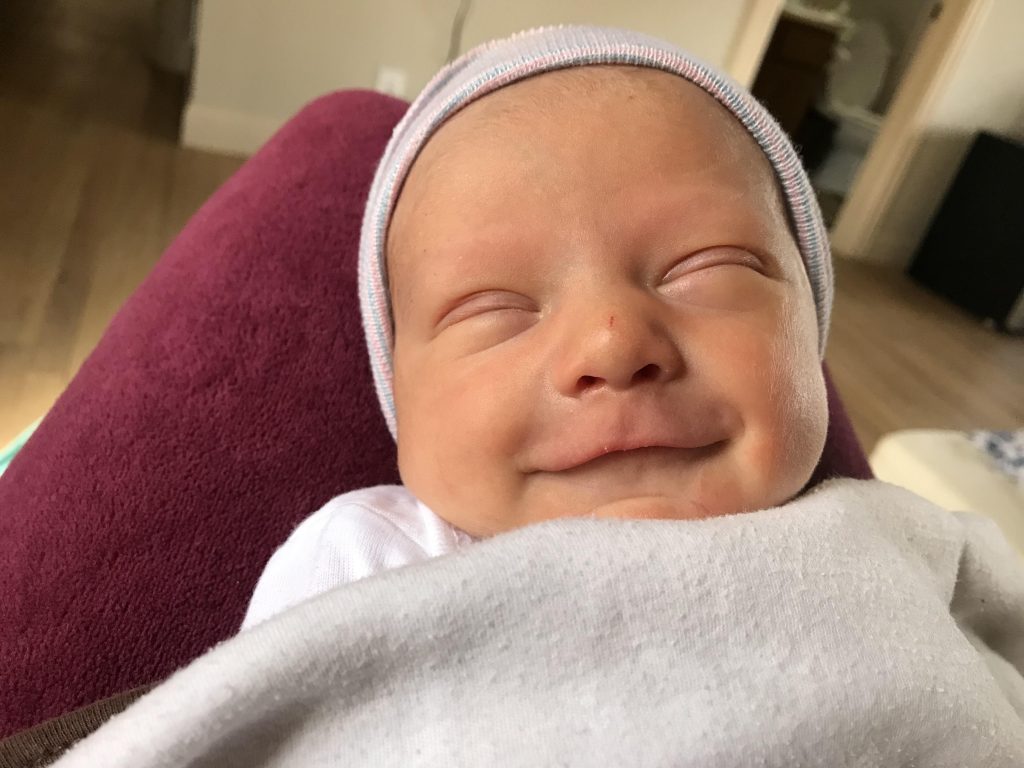 image source: reddit.com
image source: reddit.com
Sighing sounds are a universal expression of relaxation or relief, reminiscent of how adults sigh after a long day or a moment of satisfaction. Similarly, babies also engage in sighing as a way to convey their feelings of contentment and comfort. Whether it's after a satisfying feed, during moments of restful sleep, or when they're nestled in your arms!
38. Squealing or shrieking: it's not a bad thing! They're full of joy
 image source: reddit.com
image source: reddit.com
High-pitched squealing or shrieking sounds are an exuberant expression of excitement, joy, and a desire for attention in babies. Whether it's during playtime, interactions with caregivers, or moments of sensory stimulation, babies make these delightful noises to convey their enthusiasm about everything going on.
39. Whimpering means mild discomfort - a precursor to crying!

image source: reddit.com
Whimpering sounds are softer and quieter than full-blown crying, serving as a subtle indication of a baby's mild discomfort or distress. Whether it's hunger, fatigue, or a need for comfort and reassurance, whimpering signals a baby's need for attention and assistance from caregivers. This gentle vocalization invites caregivers to respond.
40. Giggling: they're enjoying whatever you're doing!

image source: reddit.com
Giggling is one of the most delightful sounds in infancy, reflecting a baby's sheer joy and amusement in response to stimuli that they find amusing or during playful interactions with caregivers or siblings. Whether it's a funny face, a silly noise, or a gentle tickle, babies giggle as a natural expression of their happiness and excitement.
41. Hiccuping: your baby has a full tummy
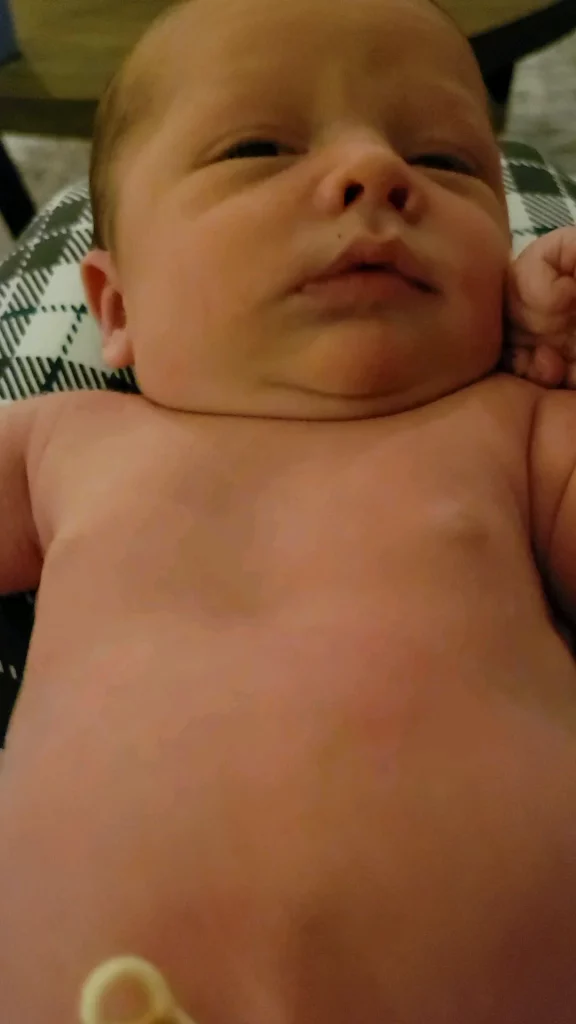
image source: reddit.com
While the exact cause of hiccups in babies is not fully understood, it's believed to be related to the immaturity of their digestive system and the occasional trapping of air in their stomach. Although hiccuping may seem bothersome or uncomfortable for babies, it typically resolves on its own without intervention.
42. Sucking sounds: self-soothing behavior or feeding
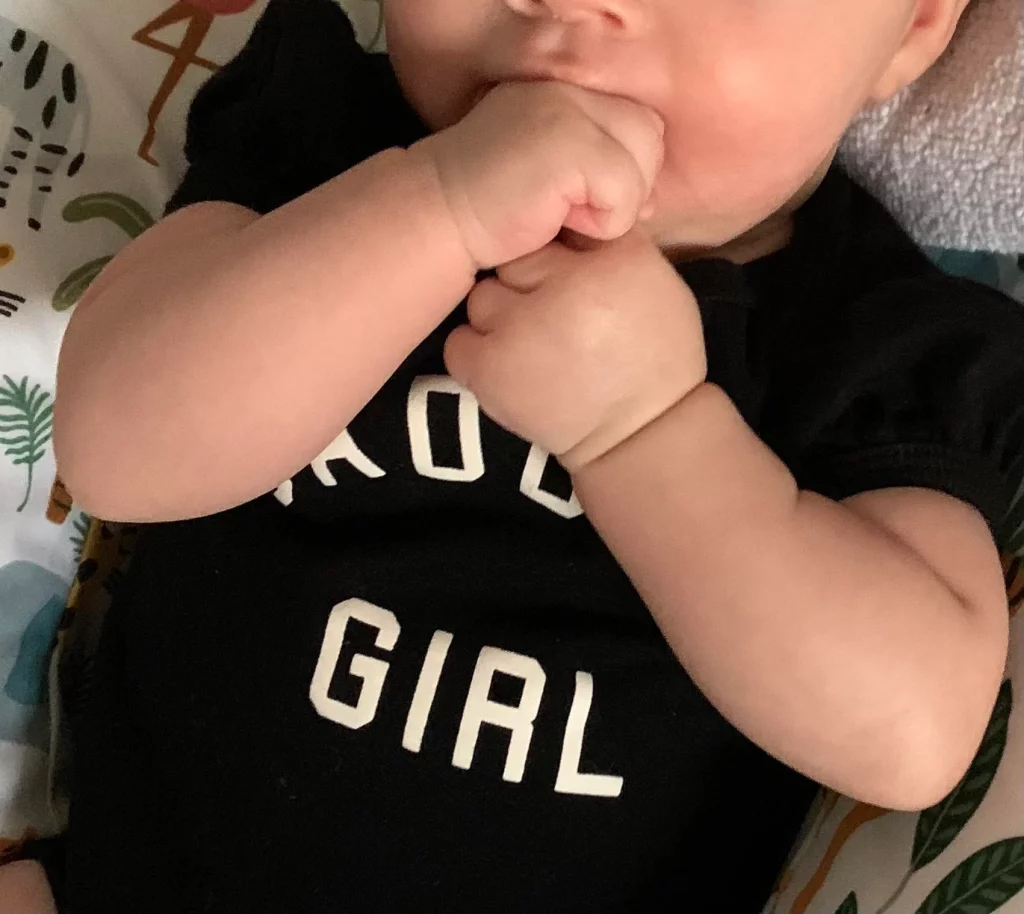 image source: reddit.com
image source: reddit.com
Sucking sounds are a familiar and comforting noise associated with feeding and self-soothing behaviors in babies. This rhythmic sucking motion not only provides babies with essential nutrition but also satisfies their innate need for oral stimulation and sensory comfort. Sucking also serves to help them regulate their emotions.
43. Growling: they're exploring and playing
 image source: reddit.com
image source: reddit.com
Whether it's pretending to be a fierce lion, a rumbling train, or a mighty dinosaur, babies growl as a form of self-expression and creative exploration. This vocalization serves as a means of communication and social interaction, inviting caregivers and peers to join in the fun and excitement of playtime.
44. Snorting: most often happens in sleep due to congestion
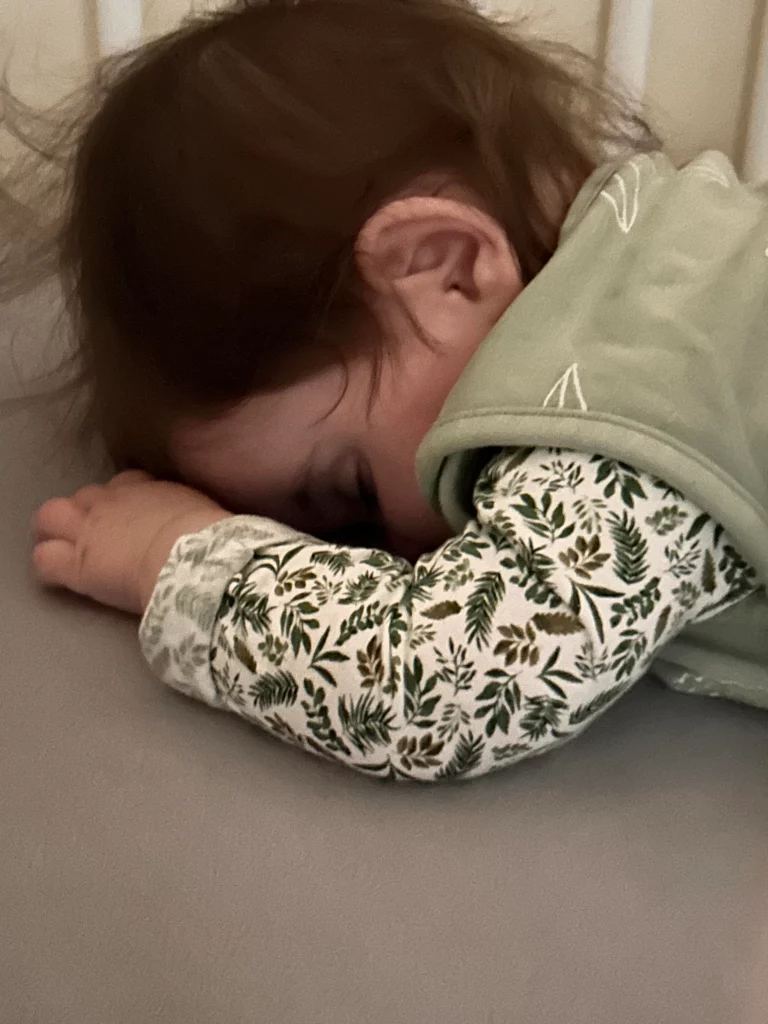 image source: reddit.com
image source: reddit.com
While the exact cause of snorting in babies varies, it may be related to nasal congestion or temporary obstruction of the airway passages. This can occur due to normal mucus production, environmental irritants, or positioning during sleep. In most cases, snorting is a transient and benign occurrence that resolves on its own without intervention.
45. Humming: they're exploring their own vocalizations!
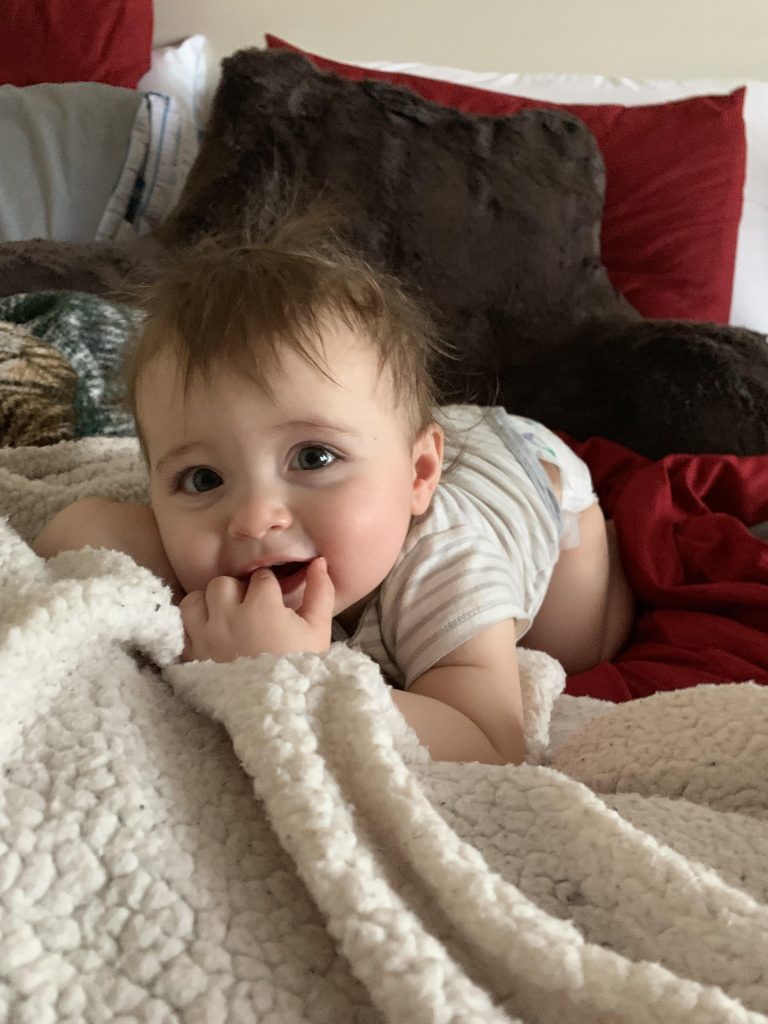 image source: reddit.com
image source: reddit.com
This gentle vibration of the vocal cords produces a rhythmic and comforting sound that can help babies relax and unwind. Whether it's during moments of rest or quiet play, humming serves as a form of self-expression and sensory exploration for babies. Additionally, humming can also occur when babies are content and relaxed.
46. Chattering: they're becoming more aware that they can speak
 image source: reddit.com
image source: reddit.com
Chattering indicates a baby's growing awareness of their vocal abilities and their eagerness to experiment with sounds and rhythms. This exploratory behavior reflects their curiosity and desire to communicate with their caregivers and peers, laying the groundwork for more sophisticated forms of language development.
47. Sneezing: they're trying to clear their nose of irritants (just like us!)
 image source: reddit.com
image source: reddit.com
In babies, sneezing can occur frequently, particularly in response to environmental factors such as dust, pollen, or changes in temperature. This involuntary reflex serves as a protective mechanism, helping babies maintain clear airways and respiratory health. While occasional sneezing is normal and harmless, caregivers should monitor their baby's sneezing patterns and seek medical attention if it becomes excessive.
48. Coarse breathing or wheezing: it could be respiratory issues that need monitoring

image source: reddit.com
Coarse breathing or wheezing sounds in babies can be concerning and may indicate underlying congestion or respiratory issues. Wheezing is characterized by high-pitched whistling or rattling sounds produced during breathing and can occur due to inflammation or narrowing of the airways.
49. Clicking their tongue: they might be trying to copy sounds they've heard
 image source: reddit.com
image source: reddit.com
Clicking tongue sounds are a fascinating aspect of baby vocalization, often observed as babies explore their oral motor skills and mimic sounds they hear in their environment. This rhythmic clicking noise is produced by the rapid movement of the tongue against the roof of the mouth, creating a distinctive sound that captures their attention and curiosity.
50. Squeaky noises: they're playful or responding to being moved around!
 image source: reddit.com
image source: reddit.com
Whether it's during interactive playtime, joyful interactions with caregivers, or spontaneous movements, babies make squeaky noises as a form of self-expression and communication. By responding with warmth and encouragement to their baby's squeaky noises, caregivers can nurture their sense of joy, curiosity, and creativity while strengthening their bond within the family unit.
 image source: reddit.com
image source: reddit.com
 image source: adventurebabies.com
image source: adventurebabies.com image source: reddit.com
image source: reddit.com image source: reddit.com
image source: reddit.com image source: reddit.com
image source: reddit.com image source: reddit.com
image source: reddit.com image source: reddit.com
image source: reddit.com image source: reddit.com
image source: reddit.com image source: reddit.com
image source: reddit.com
 image source: reddit.com
image source: reddit.com image source: reddit.com
image source: reddit.com image source: reddit.com
image source: reddit.com image source: reddit.com
image source: reddit.com image source: reddit.com
image source: reddit.com

 image source: reddit.com
image source: reddit.com image source: reddit.com
image source: reddit.com image source: bbc.co.uk
image source: bbc.co.uk image source: reddit.com
image source: reddit.com image source: reddit.com
image source: reddit.com
 image source: reddit.com
image source: reddit.com image source: reddit.com
image source: reddit.com image source: momjunction.com
image source: momjunction.com image source: reddit.com
image source: reddit.com image source: reddit.com
image source: reddit.com image source: reddit.com
image source: reddit.com
 image source: reddit.com
image source: reddit.com

 image source: reddit.com
image source: reddit.com image source: reddit.com
image source: reddit.com image source: reddit.com
image source: reddit.com image source: reddit.com
image source: reddit.com


 image source: reddit.com
image source: reddit.com image source: reddit.com
image source: reddit.com image source: reddit.com
image source: reddit.com image source: reddit.com
image source: reddit.com image source: reddit.com
image source: reddit.com image source: reddit.com
image source: reddit.com
 image source: reddit.com
image source: reddit.com image source: reddit.com
image source: reddit.com